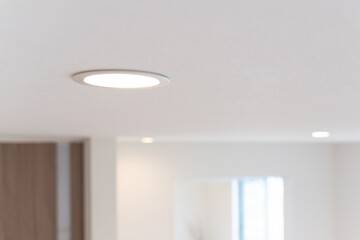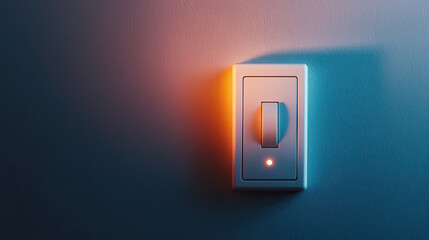LED Dimmer Bulbs & Downlights: Choosing the Right Dimmer for Smooth Dimming
LED downlights are an excellent choice for energy-efficient, long-lasting lighting. However, they require the right dimmer to function optimally. Using the wrong dimmer can cause flickering, buzzing, or limited dimming range due to mismatched electrical loads, improper voltage regulation, or incompatibility with LED drivers. This guide will help you understand how to choose the best dimmer for your LED downlights, ensuring seamless operation and enhanced ambiance.
Understanding LED Dimmer Bulbs and LED Downlights
Unlike traditional incandescent bulbs, LED dimmer bulbs and LED downlights function differently due to their lower wattage. LED dimmer bulbs are designed with built-in dimming technology that ensures compatibility with specific dimmer switches, allowing for smooth brightness adjustments. Meanwhile, LED downlights typically require a compatible dimmer to prevent flickering, buzzing, or limited dimming ranges. LED dimmer bulbs are designed to work specifically with dimmers that regulate power flow smoothly, ensuring flicker-free performance and a broad dimming range. Because of this, they require specialized dimmers that match their electronic drivers to ensure proper function and avoid issues like flickering or limited dimming range. Standard dimmers designed for high-wattage incandescent bulbs may not work correctly with LED lights, leading to performance issues.
How LED Dimmer Bulbs Work
LED dimmer bulbs function by using electronic drivers that regulate power flow, ensuring flicker-free performance. Unlike incandescent bulbs, which dim by reducing voltage, LED dimmer bulbs adjust light output through pulse-width modulation (PWM) or current regulation. This requires specialized dimmer switches that are compatible with LED technology to prevent inconsistencies in dimming performance.
The Lutron Caseta System for LED Dimming
The Lutron Caseta system is a highly regarded solution for LED dimming, offering advanced technology designed to optimize the performance of LED dimmer bulbs and downlights. Unlike standard dimmers, Caseta dimmers utilize adaptive dimming technology to ensure smooth, flicker-free operation across a wide range of LED brands. They are engineered to work with both single-pole and multi-location dimming setups, making them versatile for different home and commercial applications.
One of the standout features of the Caseta system is its seamless smart home automation integration. Using the Lutron app, users can remotely control brightness levels, set schedules, and create customized lighting scenes with ease. They are also compatible with major voice assistants such as Alexa, Google Assistant, and Apple HomeKit, enabling hands-free operation.
Additionally, Caseta dimmers incorporate fail-safe features, ensuring stable performance even in environments prone to voltage fluctuations. This enhances their reliability and longevity. Their easy installation process makes them accessible for both DIY users and professional electricians.
For a deeper understanding of dimmers and smart controls, check out this FAQ on Dimmers and Smart Controls for expert insights and answers to common questions.
Types of Dimmers for LED Dimmer Bulbs and Downlights: Which One is Best?
- Trailing-Edge (ELV) Dimmers
- Designed specifically for LED lighting.
- Provides smoother dimming with minimal flickering.
- Works well with electronic low-voltage (ELV) transformers.
- Leading-Edge (TRIAC) Dimmers
- Older technology, often compatible with legacy incandescent and halogen bulbs.
- Can work with some LED lights but may cause flickering or buzzing.
- Typically less expensive but not always ideal for LEDs.
- Smart Dimmers
- Allows remote control via smartphone apps or voice assistants like Alexa and Google Assistant.
- Offers scheduling, automation, and scene-setting features.
- Ideal for modern smart home integration.
To ensure the best results, selecting the right dimmer switch for LED dimmer bulbs is crucial for achieving smooth dimming, avoiding flickering, and maximizing efficiency. When choosing a dimmer, consider factors such as wattage compatibility, dimming range, and whether the dimmer supports trailing-edge or leading-edge technology for optimal results. For instance, highlight innovative approaches to LED dimming that can improve efficiency and compatibility.
Key Factors to Consider When Choosing an LED Dimmer
- Compatibility: Ensure the dimmer is explicitly rated for LED use and compatible with your specific downlight brand and model.
- Load Capacity: Check that the total wattage of your LED downlights falls within the dimmer’s rated load range.
- Dimming Range: Choose a dimmer with a broad dimming range (typically 10-100%) for greater flexibility.
- Installation Requirements: Verify if the dimmer switch is a simple plug-and-play replacement or requires additional wiring, such as installing a neutral wire or accommodating multi-way switching setups.
- Brand and Quality: Stick to reputable brands such as Lutron, Leviton, or Philips for reliable performance and durability.
Installation Tips for LED Dimmers
- Turn off power at the circuit breaker before installation.
- Follow manufacturer instructions for wiring and compatibility checks.
- Test the dimmer with your LED downlights to ensure smooth dimming functionality by adjusting brightness levels and checking for flickering, buzzing, or unresponsive behavior at different settings.
- If experiencing issues like flickering, consider using a dimmer with adjustable low-end trim settings, which allow you to fine-tune the minimum brightness level to prevent flickering when the lights are dimmed to their lowest setting.
For those exploring advanced dimming solutions, choosing a premium LED dimmer bulb and dimmer switch combination can enhance performance for both residential and commercial lighting setups.
Conclusion
Choosing the right dimmer for your LED dimmer bulbs and downlights enhances both functionality and aesthetics while preventing common issues like flickering or buzzing. Understanding how LED dimmer bulbs regulate brightness and ensuring they are paired with the correct dimmer switch will help achieve smooth and consistent lighting performance. Key considerations include selecting the appropriate dimmer type, ensuring compatibility with LED drivers, and verifying load capacity. Additionally, installing a quality dimmer from a reputable brand and making necessary adjustments, such as setting the low-end trim, can improve performance and longevity. Whether opting for a standard trailing-edge dimmer, which provides smoother dimming with minimal flickering, or a feature-rich smart dimmer that allows remote control and automation, ensuring compatibility and quality will lead to a better lighting experience tailored to your specific needs.


